Apocalypse Slough: why British TV is obsessed with destroying our towns and cities
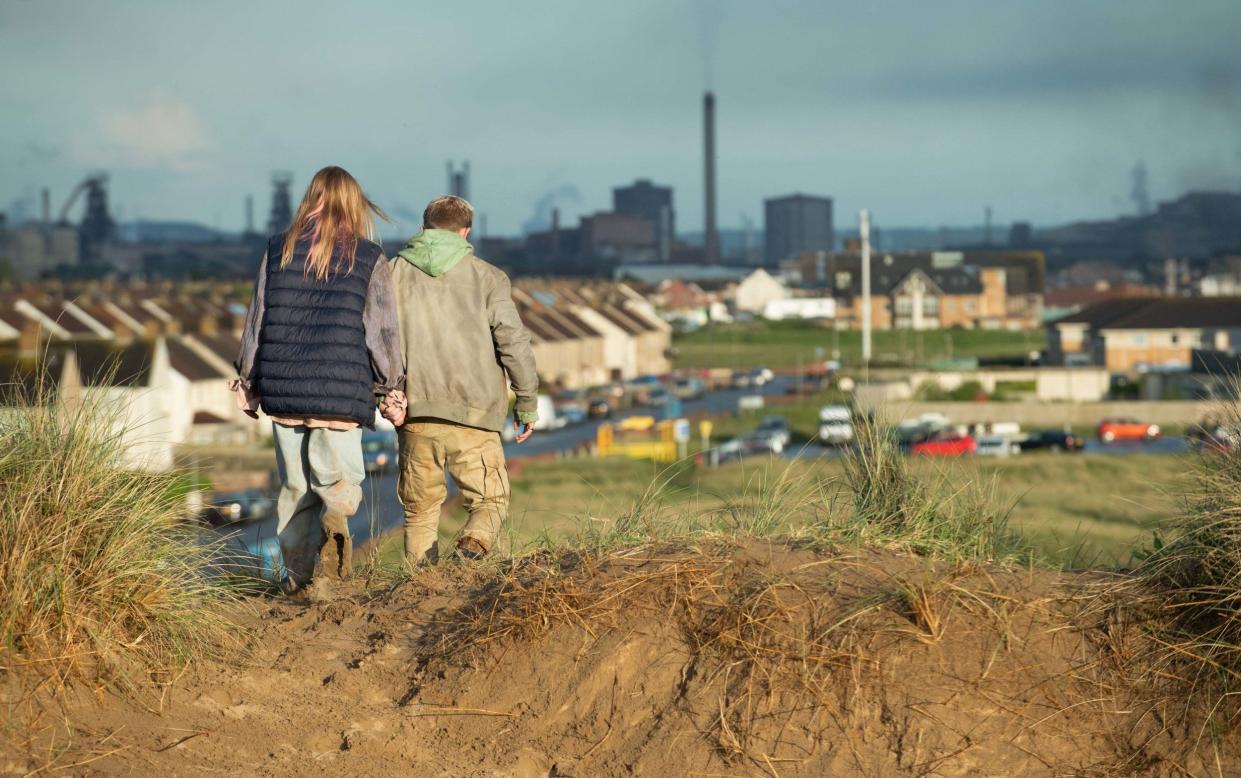
Not all dystopian dramas are set in zombie-plagued fut-ur--istic cities. The Way, a new BBC three-parter, continues the home-grown television tradition of turning humdrum areas of the UK into bleak Orwellian landscapes. Don’t have nightmares as we rewind seven memorable times that TV went to battle with familiar locations.
Port Talbot in The Way (2024)
The BBC’s bold and brilliantly bonkers drama – the result of a collaboration between actor Michael Sheen, playwright James Graham and documentarian Adam Curtis – powerfully portrays a modern-day civil uprising, which begins in Sheen’s home town of Port Talbot.
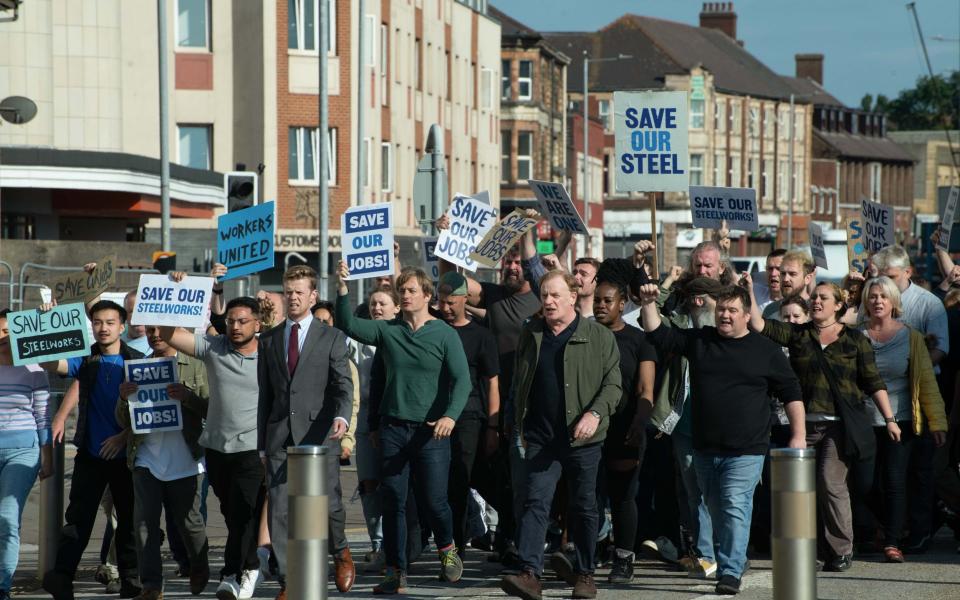
When a steelworkers’ strike escalates into revolution, the fading industrial town becomes a warzone. The authorities send in the Army, but a pitched battle sees shops petrol-bombed and upturned cars ablaze. Riot police use tear gas on protesters, before they’re sent to detainment camps on Anglesey. Soon, the M4 is closed and Wales is placed under lockdown, with strict curfews, travel bans and armed blockades. The explosive action is all the more potent for playing out among cosy terraced houses and typical high streets.
After the Driscoll family are unfairly identified as the ringleaders, they become fugitives, escaping through Afan Forest Park and over the border. They soon embark on a British road trip – from the quaint bookshops of Hay-on-Wye to the gastropubs of Cheltenham, the well-to-do suburbs of Reading and finally the Sussex coast, to flee abroad in a small boat. The sleeping dragon is well and truly awake.
Woking in The War of the Worlds (2019)
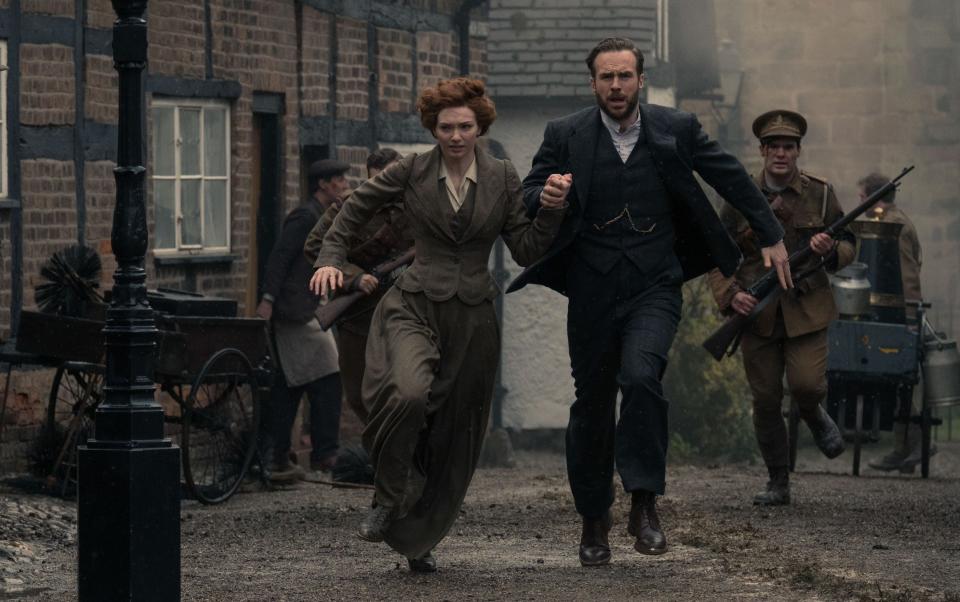
The 18-month period that H G Wells spent in Woking during the 1890s has been hailed as the most productive of his career. It was here that he finished The Island of Doctor Moreau, wrote The Time Machine and The In-vis-ible Man, and created his alien invas--ion masterpiece. The idea came from his brother Frank, who wondered what would happen if extraterrestrials suddenly attacked.
Like Wells, the novel’s narrator lived in Maybury, while the Martian landing site is nearby Horsell Common. Wells recalled: “I cycled about the district, marking down suitable places and people for destruction by my Martians. I completely wreck and sack Woking, killing my neighbours in painful and eccentric ways, then proceed via Kingston and Richmond to London.”
The BBC series, starring Rafe Spall and Eleanor Tomlinson, was still set in suburban Surrey, but was largely filmed around Liverpool, where the Edwardian era could -eas-ily be recreated, and in the nearby picturesque Cheshire village of Great Budworth. Despite the author destroying Woking, there are still statues of Wells, a Martian cylinder and a 23ft tripod in the town centre.
Manchester in Years and Years (2019)
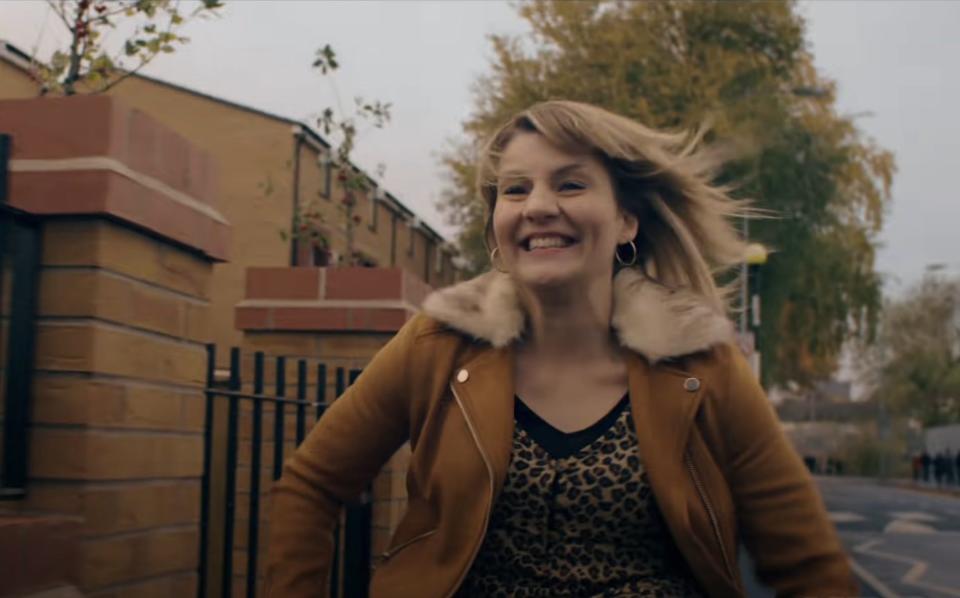
Russell T Davies humanised his epic saga by following the lives of the Lyons family in suburban Manchester, as they witnessed global turmoil between 2019 and 2034. It was a satirical and nihilistic projection of where we could be heading, but an all too plausible one.
Russia invaded Ukraine. Catas-tro-phic flooding and a monkey-flu pandemic hit the UK. A banking -crisis led to recession. Businesswoman-turned-politician Vivienne Rook (Emma Thompson) became a power-crazed populist prime minister and shut down the BBC. Mig-rants were placed in concentration camps, before being deported or executed.
Davies’s terrifying vision looked all too real, thanks to being filmed mainly on location. The Lyons’ lives played out among the city’s red-brick terraces and high-rise office blocks. A refugee camp was constructed beneath a bridge near the Trafford Centre. Riot scenes were filmed in nearby Bolton and Liverpool. Oh, and Donald Trump won a second term as US president, before starting a war with China. Told you it was all too plausible.
Sheffield in Threads (1984)
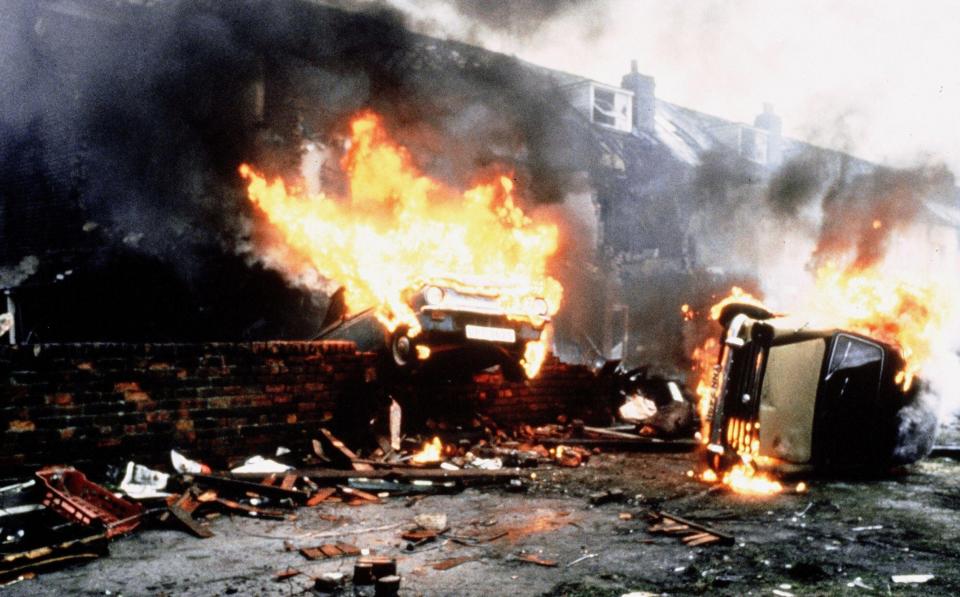
“You cannot win a nuclear war!” Released the same year that Orwell set his quintessential dystopian novel, Threads was the apocalyptic drama that traumatised a generation. Director Mick Jackson chose Sheffield because it was bang in the middle of Britain and, ironically, had a “nuclear-free-zone” policy.
Written by Barry Hines (Kes), it began like a kitchen-sink drama. After US vs Soviet tensions escalated, two nuclear warheads landed on Sheffield. Without the budget for special effects, the camera lingered on devastating details: milk bottles melting in the blast heat, terrified civilians wetting themselves, severed limbs in the streets. Everyday sights made it chillingly relatable, as housewives panic-bought food, Ford Cortinas crashed into terraced houses and Woolworths and BHS were vaporised.
Seeing a UK city stripped of its civilised underpinnings in a flash brought home the horrors of nuclear war like never before. In unflinching faux-documentary style, Threads laid bare the fragility of our supposed safety. Small wonder it’s been hailed as the scariest TV show ever made.
Wiltshire & the Sussex Downs in The Day of the Triffids (1981)
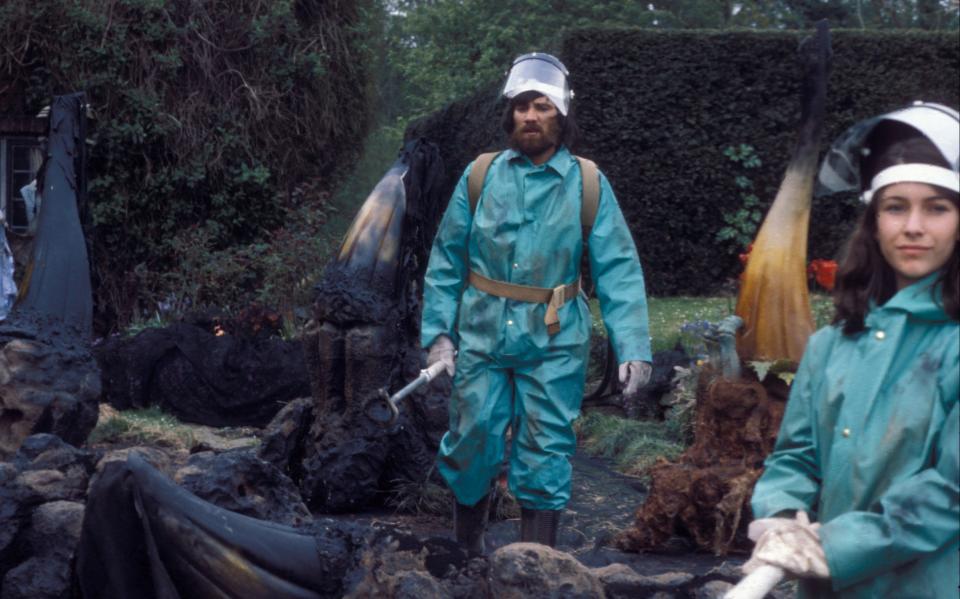
This unforgettably eerie thriller, adapted from John Wyndham’s postwar classic, was every gardener’s worst nightmare. After most of the population was blinded by a meteor shower, the Triffids – an aggressive species of tall, carnivorous plants, capable of movement – began killing humans. Survivors fled London and established a colony near Devizes, in Wiltshire.
The countryside recalled wartime evacuation, with Wyndham drawing on his experiences during the Blitz. Protagonist Bill Masen (John Duttine) started a family on a farm near the West Sussex village of Pulborough, erecting a ring fence to keep out the Triffids. The sight of the outsized plants gathering at the perimeter was like a zombie movie.
Wyndham himself hailed from the Warwickshire village of -Dorridge and his visionary take on sci-fi, dubbed “cosy catastrophe”, was quintessentially English.
Herefordshire & Monmouthshire in Survivors (1975)
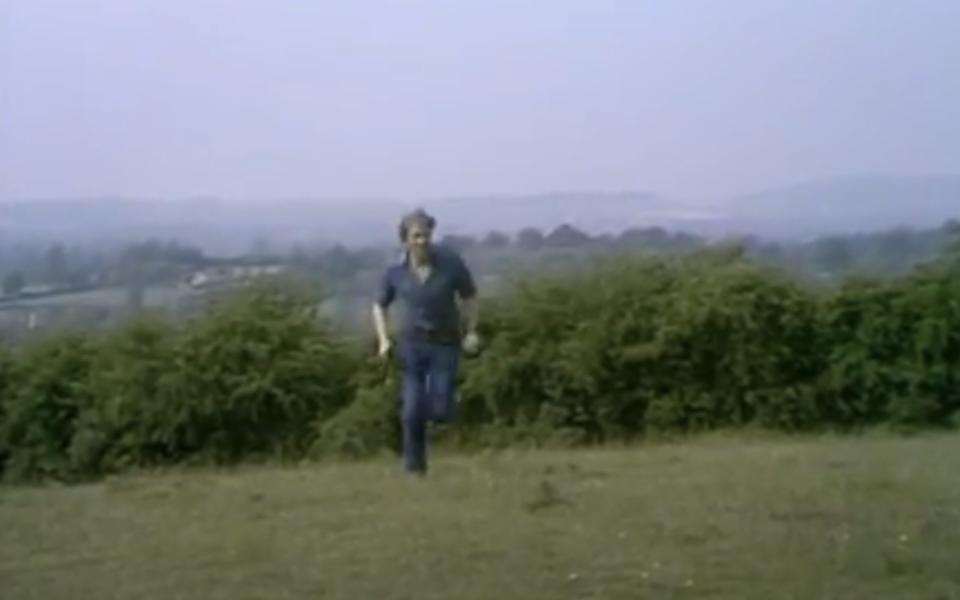
“God, please don’t let me be the only one!” A worryingly specific 99.8 per cent of the world’s population was wiped out by a flu pandemic, accidentally released in China (familiar?). Civilisation as we know it came to an end. Better head for the Welsh Marches, then.
He might be best known for -creating the Daleks, but arguably Terry Nation’s best work was this haunting post-apocalyptic drama. The Cardiff-born writer didn’t stray too far from home for his setting, needing a backdrop where humanity could plausibly go back to basics. He settled for the Welsh Borders.
Locations included Ross-on-Wye and Monmouth, where crack-of-dawn filming ensured the streets were empty. Sleepy villages such as Hope under Dinmore, Welsh -Newton, Sudbrook and How Caple could also be easily made to look deserted. Hampton Court Castle became manor-house HQ “The Grange”. Ironically, production of the 2008 BBC remake – starring Julie Graham, Max Beesley and -Paterson Joseph – was interrupted by the real-life swine-flu pandemic.
Portmeirion in The Prisoner (1967)
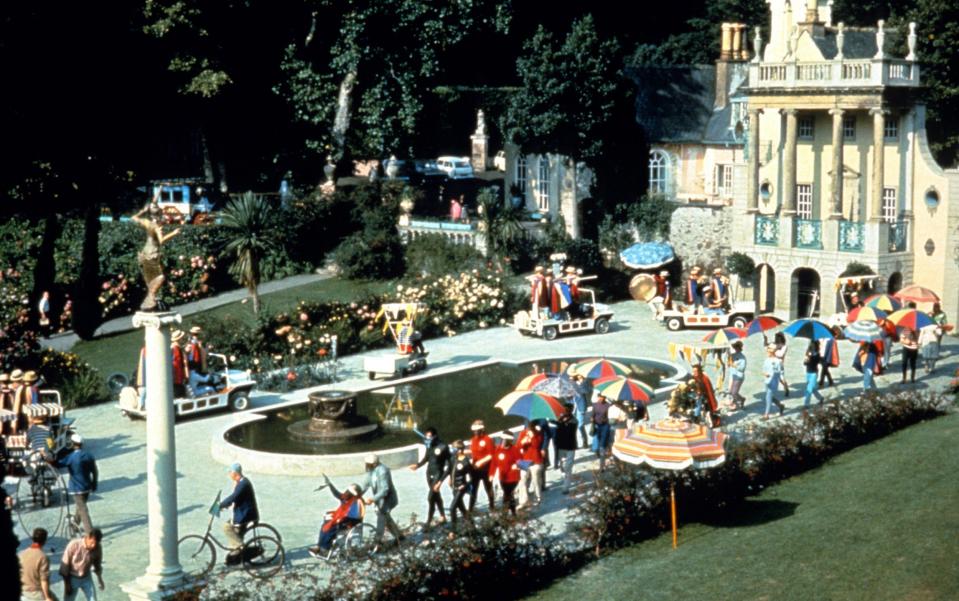
“Quite a beautiful place, isn’t it?” said all-seeing administrator Number Two. “Almost like a world on its own.” The Italianate resort in north Wales partly inspired the cult classic and arguably became its central character. It’s hard to imagine the Kafkaesque spy action unfolding anywhere but among those baro-que buildings. As the architect Sir Clough Williams-Ellis said: “Portmeirion seemed, to me at least, to steal the show from its human cast.”
When intelligence agent Number Six (Patrick McGoohan) quit the Secret Service, he was imprisoned in a strange seaside village. At the request of Williams-Ellis, Portmei-rion wasn’t credited until the finale.
The 17-part series mixed pop art with Cold War paranoia, the Swinging Sixties with surrealism – and Portmeirion provided the perfect backdrop. On the surface, it was an eccentric, charming community. In reality, it was oppressive and inescapable. Some might say a microcosm of small-town Britain itself.
A 2009 US remake flopped, partly because it swapped Portmeirion for the less characterful Swakopmund, in Namibia.
What is your favourite British post-apocalyptic drama? Let us know in the comments below
The Way begins on Monday at 9pm on BBC One and iPlayer